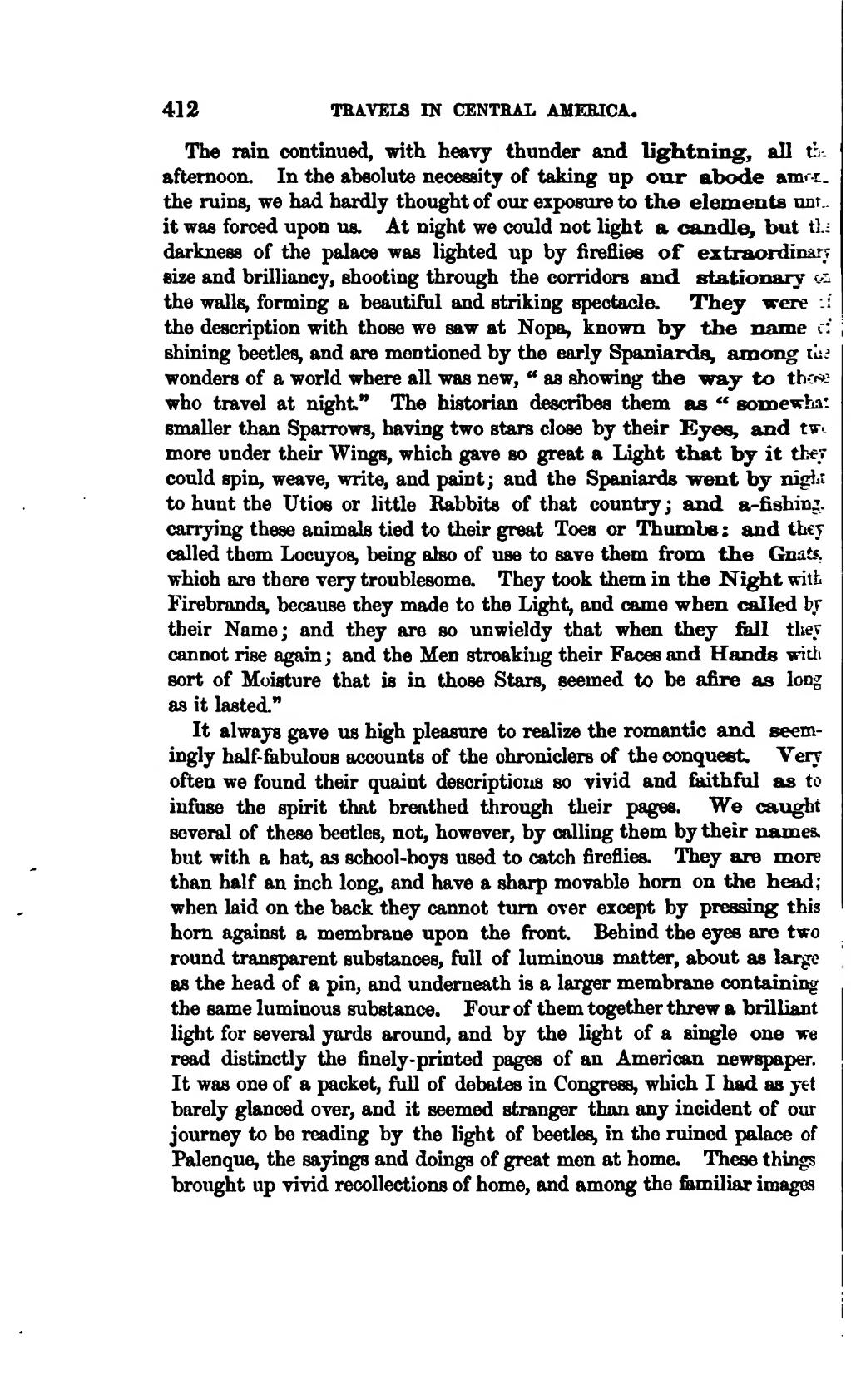The rain continued, with heavy thunder and lightning, all the afternoon. In the absolute necessity of taking up our abode among the ruins, we had hardly thought of our exposure to the elements until it was forced upon us. At night we could not light a candle, but the darkness of the palace was lighted up by fireflies of extraordinary size and brilliancy, shooting through the corridors and stationary on the walls, forming a beautiful and striking spectacle. They were of the description with those we saw at Nopa, known by the name of shining beetles, and are mentioned by the early Spaniards, among the wonders of a world where all was new, "as showing the way to those who travel at night" The historian describes them as "somewhat smaller than Sparrows, having two stars close by their Eyes, and two more under their Wings, which gave so great a Light that by it they could spin, weave, write, and paint; and the Spaniards went by night to hunt the Utios or little Rabbits of that country; and a-fishing carrying these animals tied to their great Toes or Thumbs: and they called them Locuyos, being also of use to save them from the Gnats, which are there very troublesome. They took them in the Night with Firebrands, because they made to the Light, and came when called by their Name; and they are so unwieldy that when they fall they cannot rise again; and the Men streaking their Faces and Hands with sort of Moisture that is in those Stars, seemed to be afire as long as it lasted."
It always gave us high pleasure to realize the romantic and seemingly half-fabulous accounts of the chroniclers of the conquest. Very often we found their quaint descriptions so vivid and faithful as to infuse the spirit that breathed through their pages. We caught several of these beetles, not, however, by calling them by their names, but with a hat, as school-boys used to catch fireflies. They are more than half an inch long, and have a sharp movable horn on the head; when laid on the back they cannot turn over except by pressing this horn against a membrane upon the front. Behind the eyes are two round transparent substances, full of luminous matter, about as large as the head of a pin, and underneath is a larger membrane containing the same luminous substance. Four of them together threw a brilliant light for several yards around, and by the light of a single one we read distinctly the finely-printed pages of an American newspaper. It was one of a packet, full of debates in Congress, which I had as yet barely glanced over, and it seemed stranger than any incident of our journey to be reading by the light of beetles, in the ruined palace of Palenque, the sayings and doings of great men at home. These things brought up vivid recollections of home, and among the familiar images
